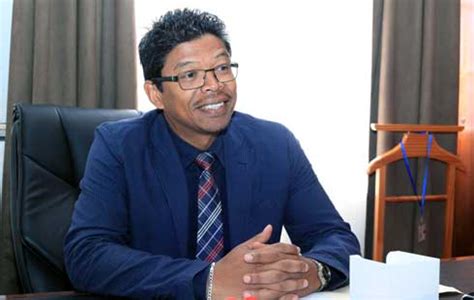Interview with : Dr Hery Ramiarison, teacher-researcher, economist and member of CREM « From subsistence economy to market economy thanks to access to electrical energy

From subsistence economy to market economy: access to electricity is one of the pillars.
For more than fifteen years, Madagascar has been going through a huge and persistent energy crisis, impacting not only its economy but also its social well-being in all its multiple dimensions.
Several reports have shown that national poverty is stagnating. In 2022, the World Bank published a report on the assessment of poverty in Madagascar in the two decades that followed, 75.2% of the national population was poor: 79.9% in rural areas and 55.5% in urban areas.
From poor governance to low production and a lack of economic infrastructure, Madagascar’s situation has unfortunately become a benchmark in terms of poverty, despite the fact that it has never experienced a critical natural disaster or war on a par with certain countries in the same ranking.
My Hydro spoke to Dr Hery Ramiarison, a lecturer and researcher at the University of Antananarivo, an economist and member of CREM, to find out his views on how to change this paradigm, which is possible with all the potential and resources available in a world where uncertainty and volatility have become the new rules.
My Hydro: How do you see the economic situation in Madagascar in relation to our commitments to the 2030 SDGs?
In agriculture, the situation is even worse, with $295 of added value produced per worker in 2022 (compared with $1,510 in SSA), down 27% on 2009, indicating subsistence farming. This situation of low productivity is closely linked to the low level of employability of the population, particularly young people. Low employability is characterised by a very low level of education among the working population, a clear deficiency in the quantity and quality of the education system, widespread school drop-out rates, and the almost total absence of training opportunities tailored to the primary sector, which is the biggest source of jobs. It is unpleasantly surprising to note that after 64 years of independence, ¾ of the population have a level of education below primary school, while only 3.1% have a higher level of education. The low-growth situation also means that Madagascar is struggling to revive investment, which has fallen from 37.15% of GDP in 2009 to 19.5% of GDP in 2022. Private investment has fallen significantly, from 33.2% of GDP in 2009 to 13.3% of GDP in 2022, due to low domestic savings, lack of access to appropriate and affordable financing, and other structural constraints. The low level of investment is also reflected in credit to the private sector, which stands at around 17% of GDP for 2020, 2021 and 2022. Net foreign direct investment (FDI) flows are also on a downward trend, falling from USD 612 million in 2018 to USD 468 million in 2022, a decline of 42%. Investors and banks are becoming more cautious in a hostile business environment. Weak wealth creation of this kind reduces our chances of achieving our SDGs in 2030.
My Hydro: What are the blocking factors that prevent us from being attractive and competitive? Does our island status penalise us?
Dr Hery R: In my opinion, this has nothing to do with our island status. In fact, many island countries are in a much better situation. It’s the business environment, which is more hostile to productive investment, that is the main cause. And it has to do with the quality of public policies. Our public policies have always primarily targeted the symptoms rather than the underlying causes of underdevelopment, in this case the constraints on productive investment. Among these constraints, one of the most important is the lack of economic infrastructure such as roads, ports, energy, agricultural irrigation, etc. This poor choice stems from our usual vision of development, which sets ‘poverty reduction’, i.e. survival, as its ultimate goal, rather than ‘economic prosperity’. In this case, we may achieve positive results in the short term, but these are likely to disappear some time later, because the investment bottleneck remains intact. And we remain at the subsistence economy stage.

